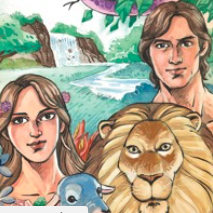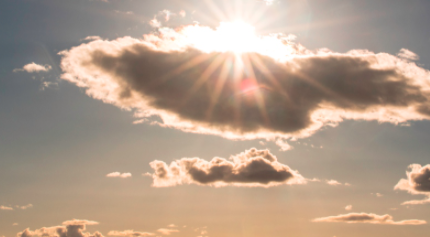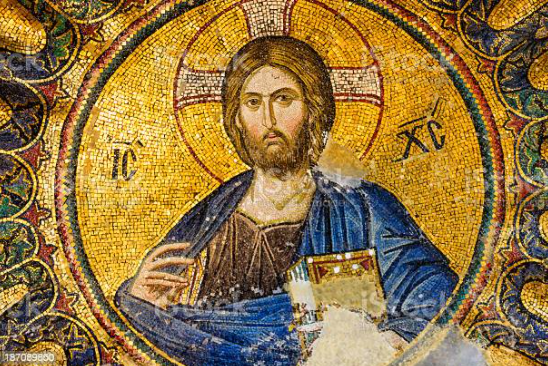“Eve faced a choice between selfish ease and unselfishly facing tribulation and death… This they did with open eyes and minds as to the consequences … the gospel had been taught to them during their sojourn in the Garden of Eden” (John A Widtsoe, JAW-1)
- Some may regret that Adam and Eve sinned. This is nonsense – Brigham Young (BY-1)
- Ordained to do what they did – Wilford Woodruff (WW-1)
- Eve did the thing the Lord intended her to do – Joseph Fielding Smith (JFieldS-1)
- Fall for the good of all mankind – Bruce R McConkie (BRM-1)
- Conversant with God – Brigham Young (BY-2)
- Wonderful intelligence – Joseph Fielding Smith (JFieldS-6)
- Full knowledge of the plan of salvation – Jeffrey R Holland (JRH-1)
- Adam and Eve willingly made a choice, choosing the path toward growth – Jeffrey R Holland (JRH-1)
- God came to him [Adam] and talked to him and told him [and Eve] what course to pursue – John Taylor (JT-1)
- In Eden, there was no veil of forgetfulness – Joseph Smith (JS-1), Orson Pratt (OP-1), Parley P Pratt (PPP-1)
- Intelligence in Garden of Eden surpasses any living human being – Joseph Fielding Smith (JFieldS-2)
- Not forbidden – but a choice – don’t eat and stay, or eat and leave – Joseph Fielding Smith (JFieldS-3, 5)
- Sin versus transgression, a planned offense – Dallin H Oaks (DHO-1)
- We celebrate Eve’s actions – Dallin H Oaks (DHO-2)
- Eve was a great and noble woman – Marion G Romney (MGR-1)
- Some garden events not historical or literal such as Eve from Adam’s rib, Christ to crush serpant’s head, leave father and mother and become one flesh, Adam-where art thou? (as if Go didn’t know), Adam & Eve as “little” children (not infants, but humble and teachable)
- Adam and Eve are “symbolically representations of all men and women” – Gordon B Hinckley (GBH-1); Act “as if you were Adam and Eve,” Temple Ceremony
- A perfect God couldn’t make imperfect mortals with sickness and death – Orson Pratt (OP-2)
- Woman are partners, work side-by-side with man – Russell M Nelson (RMN-1)
- No blood in Adams body in the Garden of Eden – Joseph Fielding Smith (JFS-4)
- The partaking of the fruit brought blood into their bodies – Joseph Fielding Smith (JFS-5)
References with fuller quotes
BRM -1 — Bruce R McConkie, Mormon Doctrine, p 221 (Deseret Book: Salt Lake City, Ut, 1978); bold added for emphasis.
… Be fruitful, and multiply. “Provide bodies for my spirit progeny.” Thus saith thy God. Eternity hangs in the balance. The plans of Deity are at the crossroads. There is only one course to follow: the course of conformity and obedience. Adam, … our father, and Eve, our mother, must obey. They must fall. They must become mortal. Death must enter the world. There is no other way. They must fall that man may be. Such is the reality. Such is the rationale. Such is the divine will. Fall thou must, O mighty Michael. Fall? Yes, plunge down from thy immortal state of peace, perfection, and glory to a lower existence; leave the presence of thy God in the garden and enter the lone and dreary world …. Yes, Adam, fall; fall for thine own good; fall for the good of all mankind; fall that man may be; bring death into the world; do that which will cause an atonement to be made, with all the infinite and eternal blessings which flow therefrom. And so Adam fell as fall he must.
BY-1 — Brigham Young, Journal of Discourses, 10:312; bold added for emphasis.
… Some may regret that our first parents sinned. This is nonsense. If I we had been there, and they had not sinned, we should have sinned. I will not blame Adam or Eve, why? Because it was necessary that sin should enter into the world; no man could ever understand the principle of exaltation without its opposite; no one could ever receive an exaltation without being acquainted with its opposite. How did Adam and Eve sin? Did they come out in direct opposition to God and to His government? No. But they transgressed a command of the Lord, and through that transgression sin came into the world. The Lord knew they would do this, and He had designed that they should.
BY-2 — Brigham Young, Journal of Discourses, 9:149; bold added for emphasis
… Adam was as conversant with his Father who placed him upon this earth as we are conversant with our earthly parents.
DHO-1 — Dallin H Oaks, “The Great Plan of Happiness.” In Ensign, Nov 1993, pp 72-5. bold added for emphasis
This transition, or “fall,” could not happen without a transgression-an exercise of moral agency amounting to a willful breaking of a law (see Moses 6:59). This would be a planned offense, a formality to serve an eternal purpose …. It was Eve who first transgressed the limits of Eden in order to initiate the conditions of mortality. Her act . . . was formally a transgression but eternally a glorious necessity to open the doorway toward eternal life. Adam showed his wisdom by doing the same. And thus Eve and ”Adam fell that men might be” (2 Nephi 2:25). This suggested contrast between a sin and a transgression reminds us of the careful wording in the second article of faith: “We believe that men will be punished for their own sins and not for Adam’s transgression” (emphasis added). It also echoes a familiar distinction in the law. Some acts, like murder, are crimes because they are inherently wrong. Other acts, like operating without a license, are crimes only because they are legally prohibited. Under these distinctions, the act that produced the Fall was not a sin- – inherently wrong — but a transgression — wrong because it was formally prohibited.
DHO-2 — Dallin H Oaks, “The Great Plan of Happiness.” In Ensign, Nov 1993, pp 73. bold added for emphasis
… Some Christians condemn Eve for her act, concluding that she and her daughters are somehow flawed by it. Not the Latter-day Saints! Informed by revelation, we celebrate Eve’s act and honor her wisdom and courage in the great episode called the Fall.
GBH-1 — Gordon B Hinckley, Teachings of Gordon B Hinckley, [Salt Lake City: Deseret Book], 636. bold added for emphasis
… we have sketched before (the temple ceremony) us the odyssey of man’s eternal journey from premortal existence through this life to the life beyond. “
JAW-1 — John A Widtsoe, Evidences and Reconciliations, pp 193-4; bold added for emphasis
… Eve faced a choice between selfish ease and unselfishly facing tribulation and death… This they did with open eyes and minds as to the consequences … the gospel had been taught to them during their sojourn in the Garden of Eden.
JFieldS-1 — Joseph Fielding Smith, Answers to Gospel Questions 4:80; (5 vol, 1957-1966) Deseret Book: Salt Lake City, Ut); bold added for emphasis.
… The simple fact is, as explained in the Book of Mormon and the revelations given to the Prophet Joseph Smith, the fall was a very essential part of the divine plan. Adam and Eve therefore did the very thing that the Lord intended them to do. If we had the original record, we would see the purpose of the fall clearly stated and its necessity explained.
JFieldS-2 — Joseph Fielding Smith, Doctrines of Salvation, 1:59 (Bookcraft: Salt Lake City, UT, 1998), bold added for emphasis
ADAM SPOKE CELESTIAL LANGUAGE.
The first man placed upon this earth was an intelligent being, created in the image of God, possessed of wisdom and knowledge, with power to communicate his thoughts in a language, both oral and written, which was superior to anything to be found on the earth today. This may sound very sweeping and dogmatic to those who hold to the other view, but it is not any more so than their statements to the contrary. Moreover, I do not say it of myself, but merely repeat what the Lord has said; and surely the Creator, above all others, ought to know!
JFieldS-3 — Joseph Fielding Smith, “Fall-Atonement-Resurrection-Sacrament,” in Charge to Religious Educators, 1982, p. 124); bold added for emphasis.
… What did Adam do? The very thing the Lord wanted him to do; and I hate to hear anybody call it a sin, for it wasn’t a sin. Now this is the way I interpret that: The Lord said to Adam, here is the tree of the knowledge of good and evil. If you want to stay here, then you cannot eat of that fruit. If you want to stay here, then I forbid you to eat it. But you may act for yourself, and you may eat of it if you want to. And if you eat it, you will die.
… Mortality was created through the eating of the forbidden fruit, if you want to call it forbidden, but I think the Lord has made it clear that it was not forbidden. He merely said to Adam, if you want to stay here [in the garden] this is the situation. If so, don’t eat it.
JFieldS-4 — Joseph Fielding Smith, Doctrines of Salvation, 1:76–77; bold added for emphasis.
…Adam had a spiritual body until mortality came upon him through the violation of the law under which he was living, but he also had a physical body of flesh and bones.
… Now what is a spiritual body? It is one that is quickened by spirit and not by blood. …
… When Adam was in the Garden of Eden, he was not subject to death. There was no blood in his body and he could have remained there forever. This is true of all the other creations.
JFieldS-5 — Joseph Fielding Smith, The Atonement of Jesus Christ, Brigham Young University Speeches of the Year [25 Jan. 1955], 2); bold added for emphasis.
… Adam and Eve were chosen to come here as the primal parents of humanity. And they were placed in the Garden of Eden where there was no death and we read in the scriptures that they could have lived in that Garden forever, but not under the most favorable circumstances. For there, although they were in the presence of God, they were deprived of certain knowledge and understanding in a condition where they could not understand clearly things that were necessary for them to know. Therefore, it became essential to their salvation and to ours that their nature should be changed. The only way it could be changed was by the violation of the law under which they were at that time. Mortality could not come without violation of that law and mortality was essential, a step towards our exaltation. Therefore, Adam partook of the forbidden fruit, forbidden in a rather peculiar manner for it is the only place in all the history where we read that the Lord forbade something and yet said, ‘Nevertheless thou mayest choose for thyself.’ He never said that of any sin. I do not look upon Adam’s fall as a sin, although it was a transgression of the law. It had to be. And Adam came under a different law. The temporal law. And he became subject to death. The partaking of that fruit created blood in his body and that blood became the life-giving influence of mortality.
JFieldS-6 — Joseph Fielding Smith, Doctrines of Salvation, 1:59; bold added for emphasis.
ADAM NOT END PRODUCT OF EVOLUTION. Adam was placed here, not a wild, half- civilized savage, but a perfectly-developed man, with wonderful intelligence, for he helped to create this earth. He was chosen in pre-existence to be the first man upon the earth and the father of the human race, and he will preside over his posterity forever.
Now, the Lord did not choose a being that had just developed from the lower forms of life, to be a prince, an archangel, to preside over the human race forever! Adam, as Michael, was one of the greatest intelligences in the spirit world and he stands next to Jesus Christ. When he came upon the earth, the Lord gave him a perfect form of government.
JRH-1 — Jeffrey R Holland, Christ and the new Covenant, pp 202-3; Deseret Book: Salt Lake City, Ut, 1997; bold added for emphasis.
These terrible risks of sorrow and death were facts Adam and Eve were willing to face in order that “men might be.” But they — like us — were able and willing to venture these only with the knowledge that there would be safety at the end of the day for those who wanted it and lived for it. They were willing to transgress knowingly and consciously (the only way they could “fall” into the consequences of mortality, inasmuch as Elohim certainly could not force innocent parties out of the garden and …, be a just God) only because they had a full knowledge of the Plan of salvation, which would provide for them a way back from their struggle with death and hell. As Adam would later say, “Blessed be the name of God, for because of my transgression my eyes are opened, and in this life I shall have joy, and in the flesh I shall see God.” (Moses 5:10)
On that same occasion Eve said even more poignantly, “Were it not for our transgression we never should have … known good and evil, and the joy of our redemption, and the eternal life which God giveth unto all the obedient.” (Moses 5:11)
So Adam and Eve willingly made a choice, choosing the path toward growth and godhood inherent in the fruit of the tree of knowledge of good and evil over the potentially meaningless (at least at that point in their development) tree of life.
JS-1 — Joseph Smith, Lectures on Faith, 2:12; bold added for emphasis.
… [Adam was] lord or governor of all things on earth, and at the same time enjoying communion and intercourse with his Maker, without a veil to separate between.”
JT-1 — John Taylor, The Gospel Kingdom, sel. G. Homer Durham (Salt Lake City: Bookcraft, 1987), p. 91; bold added for emphasis.
… How did Adam get his information of the things of God? He got it through the Gospel of Jesus Christ, and through this same Priesthood of which we have been speaking. God came to him in the garden and talked with him. We are told that no man can see the face of God and live. How was it that he obtained his knowledge of God? Through the Gospel; and he was the first man upon this earth that had the Gospel and the holy Priesthood; and if he had it not, he could not have known anything about God or his revelations. But God revealed himself to him and told him what he might do and what he might not do, what course he was to pursue and what course not to pursue
MGR-1 — Marion G Romney, “Mother Eve, a Worthy Exemplar” Relief Society Magazine 55 (February) 84-89; bold added for emphasis
… calling your attention to the five great character traits of Mother Eve, as they ae revealed in the scriptures.
… she was a great and noble woman who set an example in righteous living worthy of emulation not only by members of Relief Society but by all other women.
The virtues I speak of are these:
1. She labored with her husband.
2. She fulfilled her mission to multiply and replenish the earth.
3. She prayed with her husband.
4. She learned, understood, and appreciated the gospel.
5. With her husband, she taught the gospel to her children.
OP-1– Orson Pratt, Journal of Discourses, 21:203-4; bold added for emphasis.
… Adam and Eve were placed upon it, and they were immortal, just like all the beasts and just like the fishes of the sea; death had not yet come upon any of them; all things were immortal so far as this creation was concerned. The first pairs, the beginning of his temporal work, were not subject to death. And another thing, they were not to be shut out from the presence of the Almighty. They could behold his countenance, they could hear his voice. Those who then existed—could converse with him freely. There was no veil between them and the Lord.
OP-2 — Orson Pratt, Journal of Discourses, 21:289; bold added for emphasis.
“God did not make a mortal being. It would be contrary to his great goodness to make a man mortal, subject to pain, subject to sickness, subject to death …. If he had made them mortal, and subject to pain, there would have been some cause, among intelligent beings, to say that the Lord subjected man, without a cause, to afflictions, sorrows, death and mortality. But he could not do this; it was contrary to the nature of his attributes, contrary to the nature of that infinite goodness which dwells in the bosom of the Father and the Son, to make a being subject to any kind of pain.” Pratt, in journal of Discourses, 21:289. See also Pratt (2000), 81-82.
PPP-1 — Parley P Pratt, Voice of Warning, pp 110-122; bold added for emphasis.
… And to crown the whole, we behold man created in the image of God, and exalted in dignity and power, having dominion over all the vast creation of animated beings, which swarmed through the earth, while, at the same time, he inhabits a beautiful and well-watered garden, in the midst of which stood the tree of life, to which he had free access; while he stood in the presence of his Maker, conversed with him face to face, and gazed upon his glory, without a dimming veil between. O reader, contemplate, for a moment, this beautiful creation, clothed with peace and plenty; the earth teeming, with harmless animals, rejoicing over all the plain; the air swarming with delightful birds, whose never ceasing notes filled the air with varied melody; and all in subjection to their rightful sovereign who rejoiced over them; while, in a delightful garden—the capitol of creation,—man was seated on the throne of his vast empire, swaying his sceptre over all the earth, with undisputed right; while legions of angels encamped round about him, and joined their glad voices, in grateful songs of praise, and shouts of joy; neither a sigh nor groan was heard, throughout the vast expanse; neither was there sorrow, tears, pain, weeping, sickness, nor death; neither contentions, wars, nor bloodshed; but peace crowned the seasons as they rolled, and life, joy, and love, reigned over all his works
… First, man fell from his standing before God, by giving heed to temptation; and this fall affected the whole creation, as well as man, and caused various changes to take place; he was banished from the presence of his Creator, and a veil was drawn between them, and he was driven from the garden of Eden, to till the earth, which was then cursed for man’s sake, and should begin to bring forth thorns and thistles: and with the sweat of his face he should earn his bread, and in sorrow eat of it, all the days of his life, and finally return to dust.
RMN-1 — Russell M Nelson, “Lessons from Eve.” Ensign, Nov. 1987, pp 86-89; bold added for emphasis.
From the rib of Adam, Eve was formed (see Genesis 2:22; Moses 3:22; Abraham 5:16). Interesting to me is the fact that animals fashioned by our Creator, such as dogs and cats, have thirteen pairs of ribs, but the human being has one less with only twelve. I presume another bone could have been used, but the rib, coming as it does from the side, seems to denote partnership. The rib signifies neither dominion nor subservience, but a lateral relationship as partners, to work and to live, side by side.
WW-1 — Wilford Woodruff, Journal of Discourses, 23:126. bold added for emphasis.
Adam and Eve came to this world to perform exactly the part that they acted in the garden of Eden; and I will say, they were ordained of God to do what they did, and it was therefore expected that they would eat of the forbidden fruit in order that man might know both good and evil by passing through this school of experience that this life affords us
































